Alex Nathanson is one of those rare artists who makes solar power sounds exciting rather than utilitarian. Magical rather than just eco-friendly. Nathanson is a multimedia artist, engineer, educator and designer whose practice focuses on the practical and experimental applications of sustainable energy technologies, particularly photovoltaic solar power. He runs Solar Power for Artists, a design studio and education platform that explores and shares creative and traditional applications of sustainable energy, particularly photovoltaic solar power. Its archive is a fantastic place to visit if you want to discover sun-powered robots, zitars, ice cream vans and backwards-counting machines.
There’s two reasons why I wanted to talk with Alex Nathanson. The first one is that he developed Solar Protocol, together with Tega Brain and Benedetta Piantella. Solar Protocol is a web platform hosted across a network of solar-powered servers. Because the sun is not shining all day every day, the servers are set up in different locations around the world, coordinating to serve the website from the place enjoying the most sunshine at the time you want to see that website. The second reason is that Nathanson is the author of a new book that explores the history of creative applications of photovoltaic solar power in art and design practices.
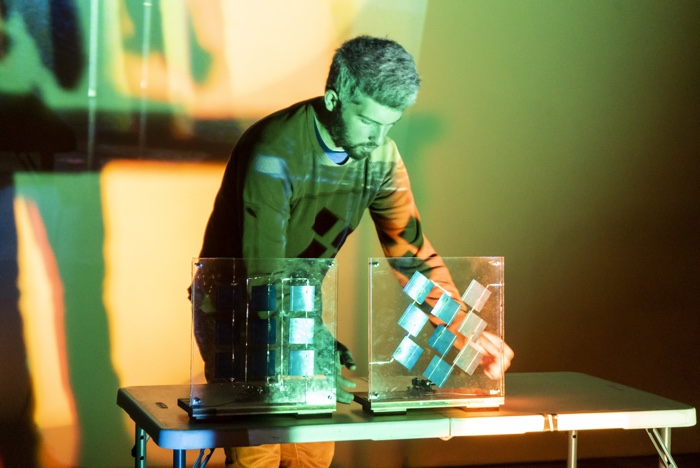
Alex Nathanson playing photovoltaic analog synthesizers, performed in collaboration with Dylan Neely and Lindsay Packer, at Issue Project Room, December 2019. Image courtesy of Alex Nathanson
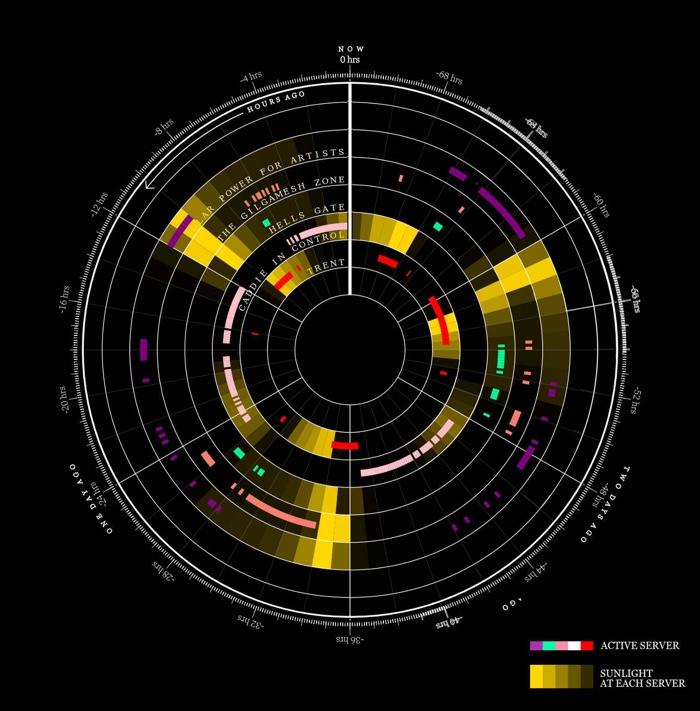
Tega Brain, Alex Nathanson and Benedetta Piantella, Solar Protocol, 2021
Hi Alex! What motivated you to start working with solar energy in the context of art in particular?
I initially began working with solar in 2014 when I was co-curating an outdoor exhibition of electronic art with Carina Kaufman-Gutierrez for Flux Factory, in a community garden in Queens, NY. We had initially thought that we could run an extension cord from a neighbor’s house to power the show, but that turned out to not be possible, so we turned to solar power. We installed a small 200 watt system, which ran the entire show. It quickly became clear that there were a lot of interesting avenues to explore the poetics of solar energy in art making and a lot of necessary educational gaps in the space that I could address through workshops. At its most basic level, the variability and precariousness of a solar powered artwork without a battery, so its behavior immediately correlates to the amount of light it is exposed to, introduces a lot of exciting compositional opportunities.
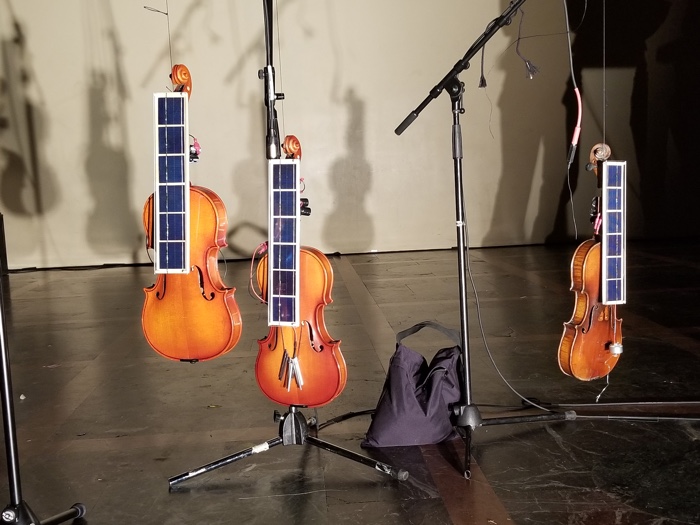
3 Photovoltaic Prepared Violins (2019). When the violins are exposed to light electromechanical percussion elements are activated. Performed in collaboration with Dylan Neely and Lindsay Packer, at Issue Project Room, December 2019. Image courtesy of Alex Nathanson

6V Solar Mosaic: Refugees Welcome, 2017. Image courtesy of Alex Nathanson
Your practice engages with the creative applications of photovoltaic solar power. These panels tend to be big and highly visible. What is the visual/aesthetic impact of working with solar panels? Does that constitute a huge disincentive for artists to use the technology?
My work is focused on exploring what I often refer to as the poetics of photovoltaics. Basically, I’m trying to tease out some of the unique communicative characteristics of solar energy and bring them to the forefront in my artistic work. A lot of times I’m focused on the electrical behaviors and the cell or module gives the viewer a hint about about what is going on. In some of my work, I have tried to reimagine what a solar module could be by using irregular shapes to create mosaic pieces. The classic solar cell or module look is large blue-ish rectangle, but a practitioner who understands the technology can get away from that form if they want.
Addressing the visual form of the solar module is one of the really exciting challenges of working in this space. Like all types of art making, not all artists will want to respond to the aesthetic limitations and design challenges of this media, but that’s no different from other technologies.
There are many different ways to engage with PV material. In the near future, a greater range of types of PV materials, with different visual and physical properties, will likely become more accessible to the average artist and designer which will make escaping the blue rectangle even easier. Of course, the solar panel can also be hidden from the viewer even if the artwork is solar powered to keep the focus on the work itself.
The other obstacle to using solar power is that it can be unreliable and there’s the need to use batteries during the night. Is this something that can be avoided? Or even exploited in some cases?
The precariousness and variability of solar power is something that should be embraced by artists. Once you bring batteries in, all of a sudden you can treat the PV system as just another power source. There are 2 directions solar art work can go in. The first is work that wants to use it as a dependable power source. The second is work that wants to explore some of these unique attributes of an environmentally dependent power supply. Both provide interesting creative opportunities.
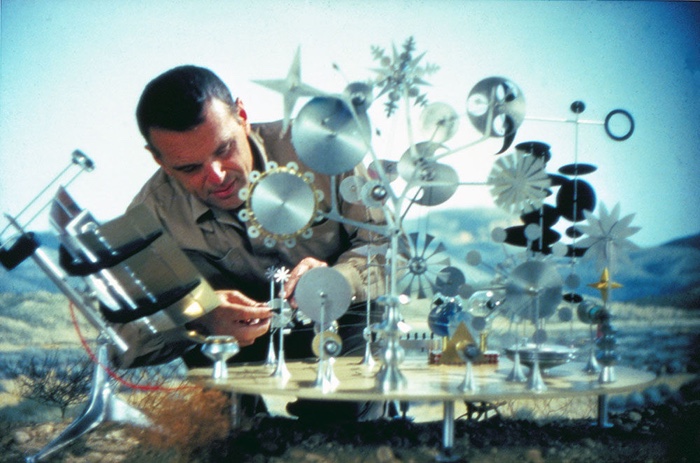
Charles and Ray Eames, Solar Do-Nothing Machine, 1957
You have been engaging with solar energy in creative contexts for a couple of years now. Is there a long history of solar energy use in art?
Yes! The very first creative work to incorporate PV was a whimsical mechanical sculpture created by the Eameses as a commercial for an aluminum company in the late 50s. PV started being used in sound art works by a small group of artists in the late 60s. In the 80s the field expanded to include a wide range of sculptural applications. I’ve documented this history very thoroughly in my book A History of Solar Power Art and Design, which will be released this summer by Routledge.
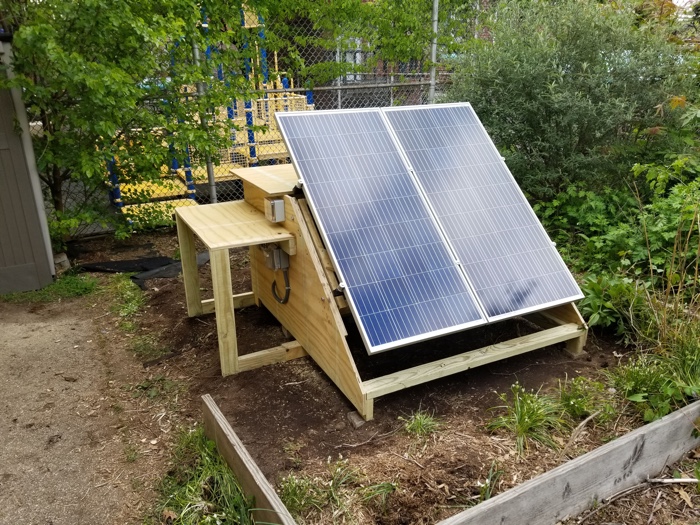
Work table with integrated 300 watt PV system on single-axis tilt mount, 2021. Image courtesy of Alex Nathanson
Does working with solar energy change our understanding and relationship with energy?
I think so. We’re not used to accounting for all of our energy consumption. In the US, 99.9% of the time we plug something in to the wall, it turns on, and we don’t think about it. As artists working with solar power, we’re either accounting very granularly for our energy use to ensure our system can run the required electrical loads or we’re exploring the space of failure when power is unstable. Both roles require us to think more deeply about energy. In some projects, I have found it has created a healthier work relationship. For example, in Solar Protocol our servers turn off when they run out of energy, which is usually a few hours after sunset. This means we can’t work late in to the night even if we wanted to, which forced a slightly healthier work-life balance.
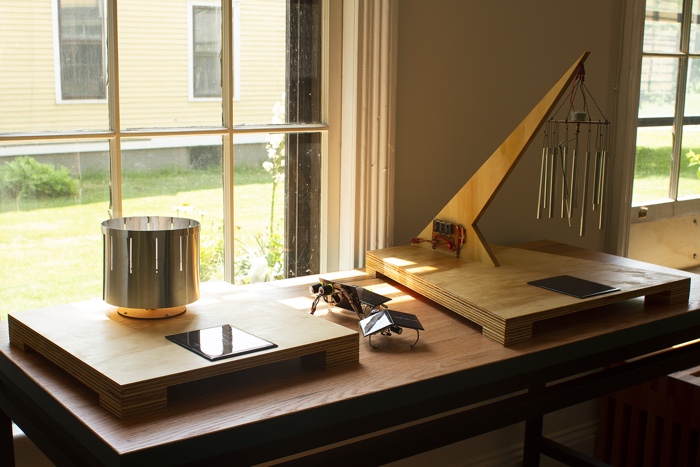
3 interactive photovoltaic installations, created for The Climate Museum. Left: solar powered zoetrope. Center: BEAM-style bots. Right: Solar Chimes. Image courtesy of Alex Nathanson
Solar energy is often presented as this ultra clean source of energy. But making solar panels requires the extraction of minerals, the appropriation of water, use of energy and toxic chemical processes. And then there’s the impact of transport, of what is done with old solar panels once they are not used anymore, etc. Is this dimension of the environmental impact of solar energy a cause for concern?
It’s an important consideration, but not necessarily a primary concern. It’s important to continue to improve solar technology, minimize environmental impact, improve labor conditions, etc. However, compared to nearly all other methods for producing energy it is vastly less destructive. Our concern needs to be on getting off of fossil fuels. 1st generation PV cells are the most widely used. They have the largest environmental impact in that they use the most material and consume the most energy in their production. Other types of PV cells consume less when produced and some of these will likely become more common in coming years.
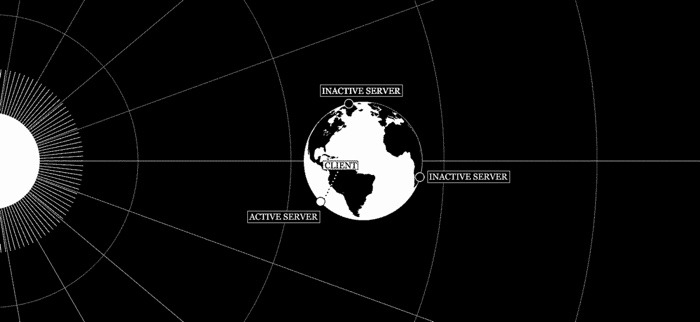
Tega Brain, Alex Nathanson and Benedetta Piantella, Solar Protocol, 2021
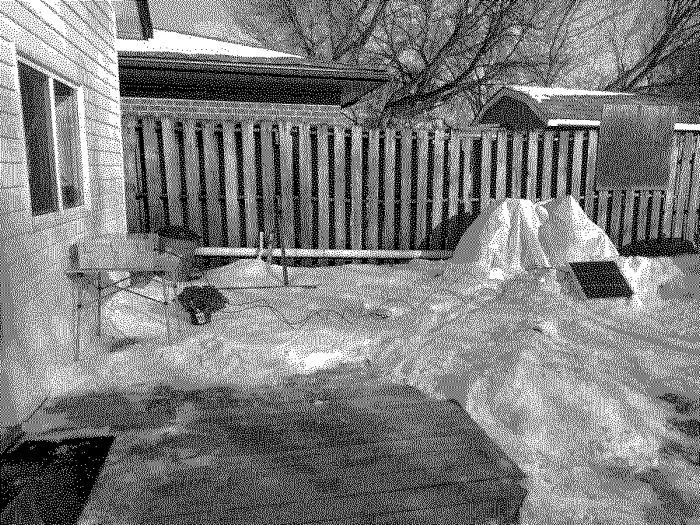
Server in Trent, Trent University, Canada. Part of Tega Brain, Alex Nathanson and Benedetta Piantella, Solar Protocol, 2021
I discovered your work thanks to Tega Brain who told me about your wonderful practice. Could you tell us about the role you played in developing Solar Protocol?
Solar Protocol is a network of small scale solar powered servers spread around the world, which direct traffic to whichever server is in the most sunlight at a given time. The project explores how we can reimagine infrastructure to change our relationship to the internet. It’s a collaboration between Tega Brain, Benedetta Piantella, and I. It’s a very collaborative project, so we all work on the conceptual and technical issues together. It’s a massive and technically complex project that combines research, software engineering, hardware design, solar power engineering, community management, data viz, etc. In the future, we hope the project becomes more of a platform to grow a community of practitioners exploring low-energy digital aesthetics and at that point our roles might shift to be more focused on building this space and less on technical development.
And do you have other examples of creative works you contributed to recently?
Mostly, I’ve been focused on my book and Solar Protocol over the last year. There are 3 (at least) aspects of my practice these days: art, design, and education. These all overlap in various ways. Most recently I designed a series of 3 integrated photovoltaic structures for the NYC Department of Education’s Office of Sustainability. The structures include a table, trellis, and cart all with integrated 300 watt PV systems and a number of interfaces. They’ll be used as functional furniture and teaching aids to support photovoltaic curriculum in a number of schools.
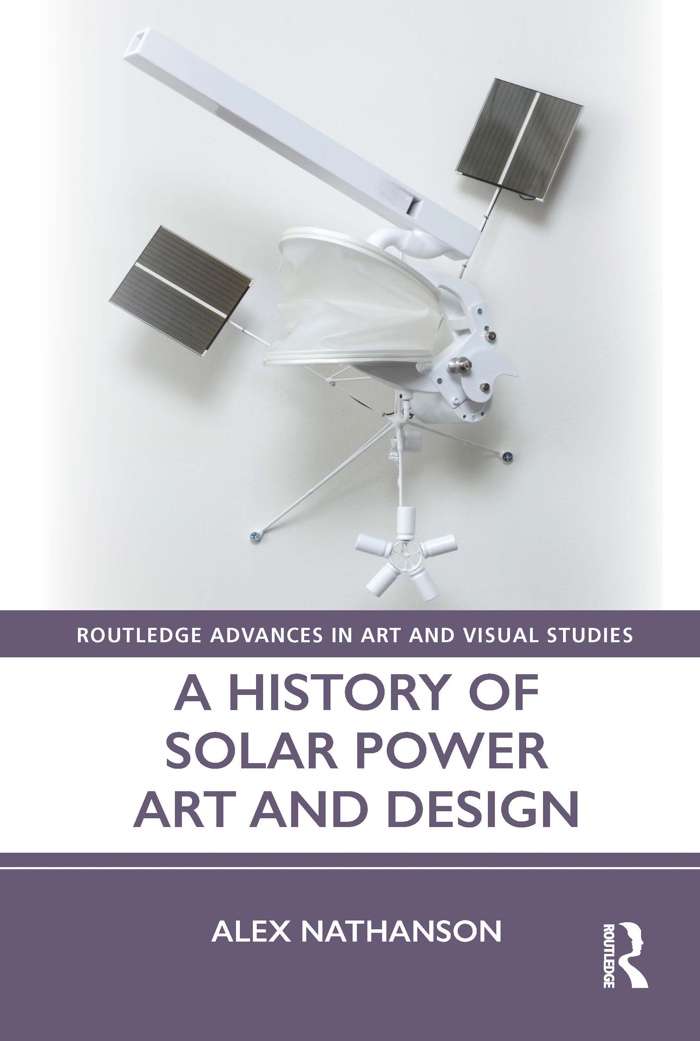
Alex Nathanson, A History of Solar Power Art and Design, 2021
Solar Power for Artists is also a book! I don’t think it is out yet. Can you tell us something about it: is it a practical, DIY guide or more a collection of creative works using solar energy?
My book is called A History of Solar Power Art and Design and will be released by Routledge this summer. It will be the first interdisciplinary history of this space. It features a huge amount of creative PV work in sculpture, sound art, textiles, building integration, product design, vehicles, performance, and much more.
In the future, I would love to write a follow up based on the material that I have developed for workshops over the years, which would be more of a DIY guide.
Any other upcoming projects, events or research you are working on at the moment?
The main thing is just finalizing my book. I’m planning some book release events for this summer and fall, which will hopefully be announced sooner rather than later.
Thanks Alex!
Related stories: Ambivalence, part 3: the necessary dialogue between art and environmental sciences, Paleo-energy: a counter-history of energy and Temporary photoElectric Digestopians (Fusing Cooking and Solar Tech with Design.)
